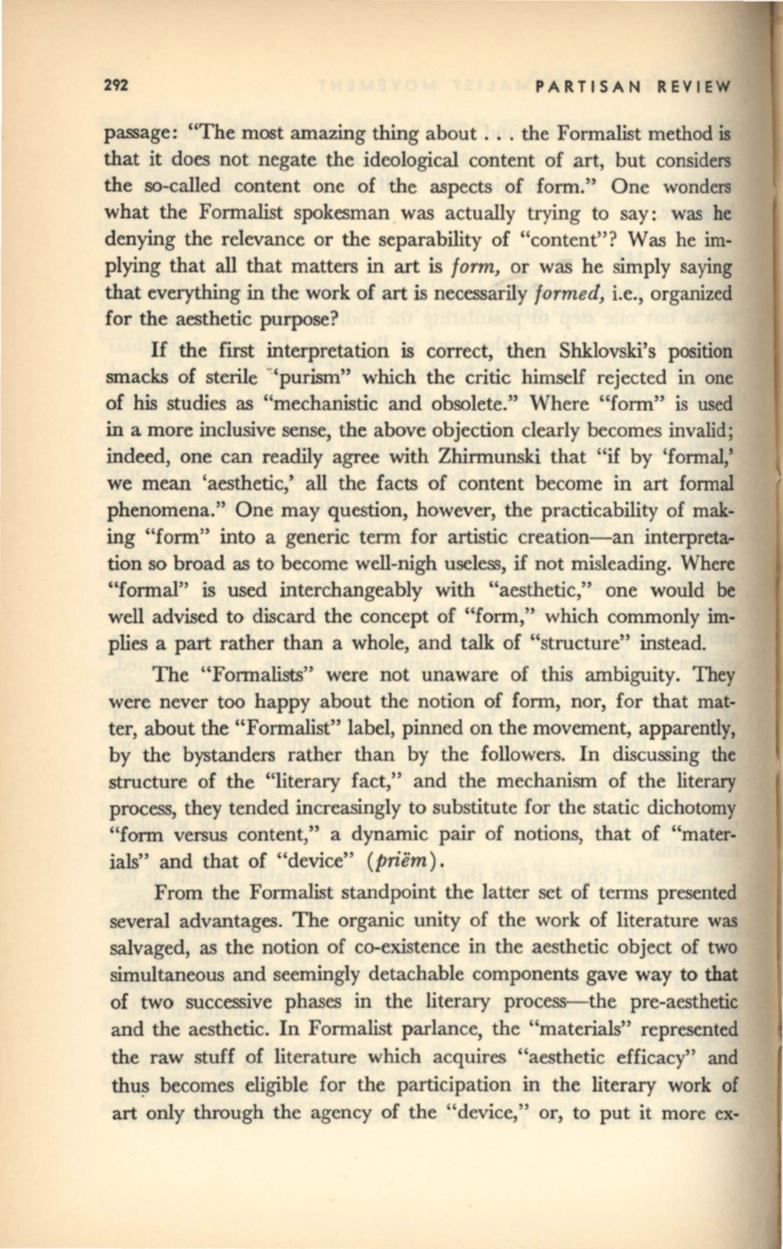
292
PARTISAN REVIEW
passage: "The most amazing thing about ... the Formalist method
is
that it does not negate the ideological content of art, but considers
the so-called content one of the aspects of form." One wonders
what the Formalist spokesman was actually trying to say: was he
denying the relevance or the separability of "content"? Was he im–
plying that all that matters in art is
form,
or was he simply saying
that everything in the work of art is necessarily
formed,
i.e., organized
for the aesthetic purpose?
If
the first interpretation is correct, then Shklovski's position
smacks of sterile e'purism" which the critic himself rejected in one
of
his
studies as "mechanistic and obsolete." Where "form" is used
in a more inclusive sense, the above objection clearly becomes invalid;
indeed, one can readily agree with Zhirmunski that
"if
by 'formal,'
we mean 'aesthetic,' all the facts of content become in art formal
phenomena." One may question, however, the practicability of mak–
ing "form" into a generic term for artistic creation-an interpreta–
tion so broad as to become well-nigh useless,
if
not misleading. Where
"formal" is used interchangeably with "aesthetic," one would
be
well advised to discard the concept of "form," which commonly
im–
plies a part rather than a whole, and talk of "structure" instead.
The "Formalists" were not unaware of tills ambiguity. They
were never too happy about the notion of form, nor, for that mat–
ter, about the "Formalist" label, pinned on the movement, apparently,
by the bystanders rather than by the followers. In discussing the
structure of the "literary fact," and the mechanism of the literary
process, they tended increasingly to substitute for the static dichotomy
"form versus content," a dynamic pair of notions, that of "mater–
ials" and that of "device"
(priem).
From the Formalist standpoint the latter set of terms presented
several advantages. The organic unity of the work of literature was
salvaged, as the notion of co-existence in the aesthetic object of two
simultaneous and seemingly detachable components gave way to
that
of two successive phases in the literary process-the pre-aesthetic
and the aesthetic. In Formalist parlance, the "materials" represented
the raw stuff of literature which acquires "aesthetic efficacy" and
thu~
becomes eligible for the participation in the literary work of
art only through the agency of the "device," or, to put it more ex-


